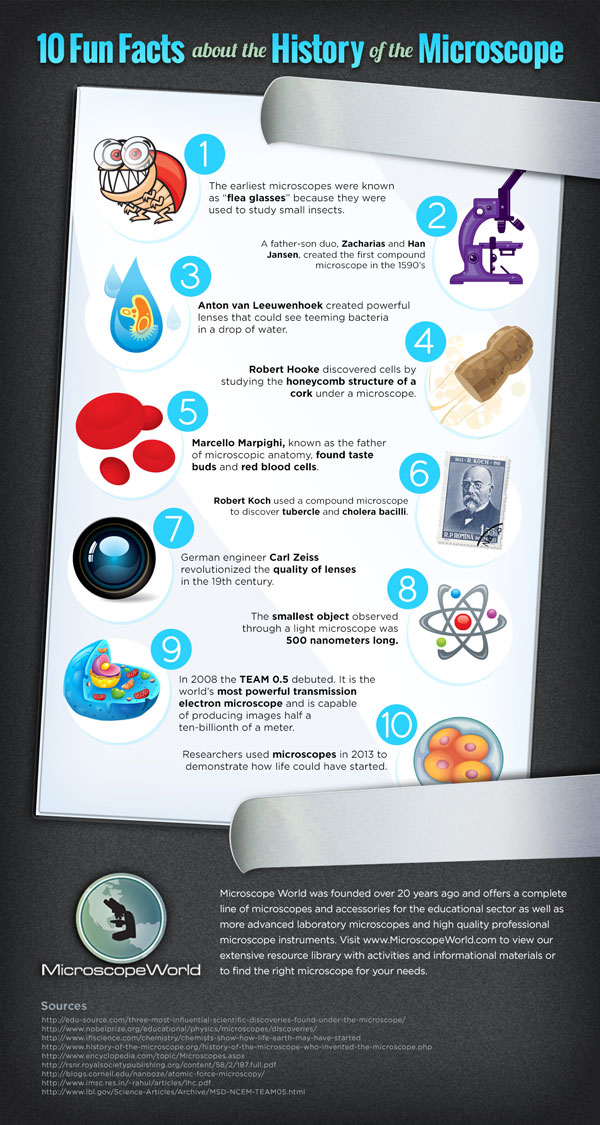Your shopping cart is currently empty.
The History Of The Microscope Infographic
 Attention science teachers! Are you looking for a new graphic to add to your classroom collection? Perhaps you’ve run out of ideas for an extra credit project for your students? This printable image will take you and your students on an adventure through the history of the microscope. With 10 interesting facts along with 10 unforgettable icons, the history of microscopes will be forever engrained in your mind.
Attention science teachers! Are you looking for a new graphic to add to your classroom collection? Perhaps you’ve run out of ideas for an extra credit project for your students? This printable image will take you and your students on an adventure through the history of the microscope. With 10 interesting facts along with 10 unforgettable icons, the history of microscopes will be forever engrained in your mind.

10 Fun Facts About the History of the Microscope
- The earliest microscopes were known as “flea glasses” because they were used to study small insects.
- A father-son duo, Zacharias and Han Jansen, created the first compound microscope in the 1590s.
- Anton van Leeuwenhoek created powerful lenses that could see teeming bacteria in a drop of water.
- Robert Hooke discovered cells by studying the honeycomb structure of a cork under a microscope.
- Marcello Marpighi, known as the father of microscopic anatomy, found taste buds and red blood cells.
- Robert Koch used a compound microscope to discover tubercle and cholera bacilli.
- German engineer Carl Zeiss revolutionized the quality of lenses in the 19th century.
- The smallest object observed through a light microscope was 500 nanometers long.
- In 2008 the TEAM 0.5 debuted. It is the world’s most powerful transmission electron microscope and is capable of producing images half a ten-billionth of a meter.
- Researchers used microscopes in 2013 to demonstrate how life could have started.
